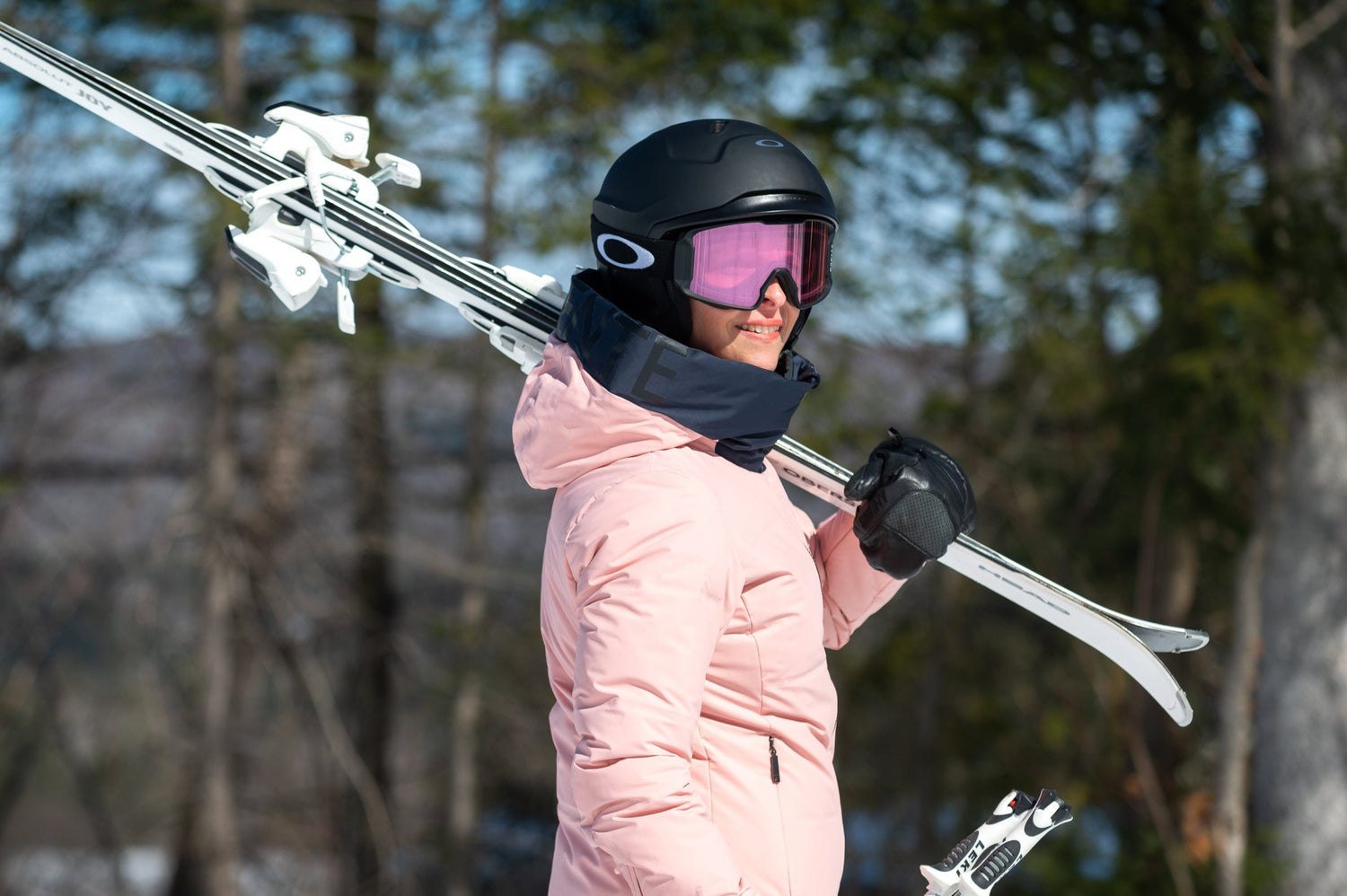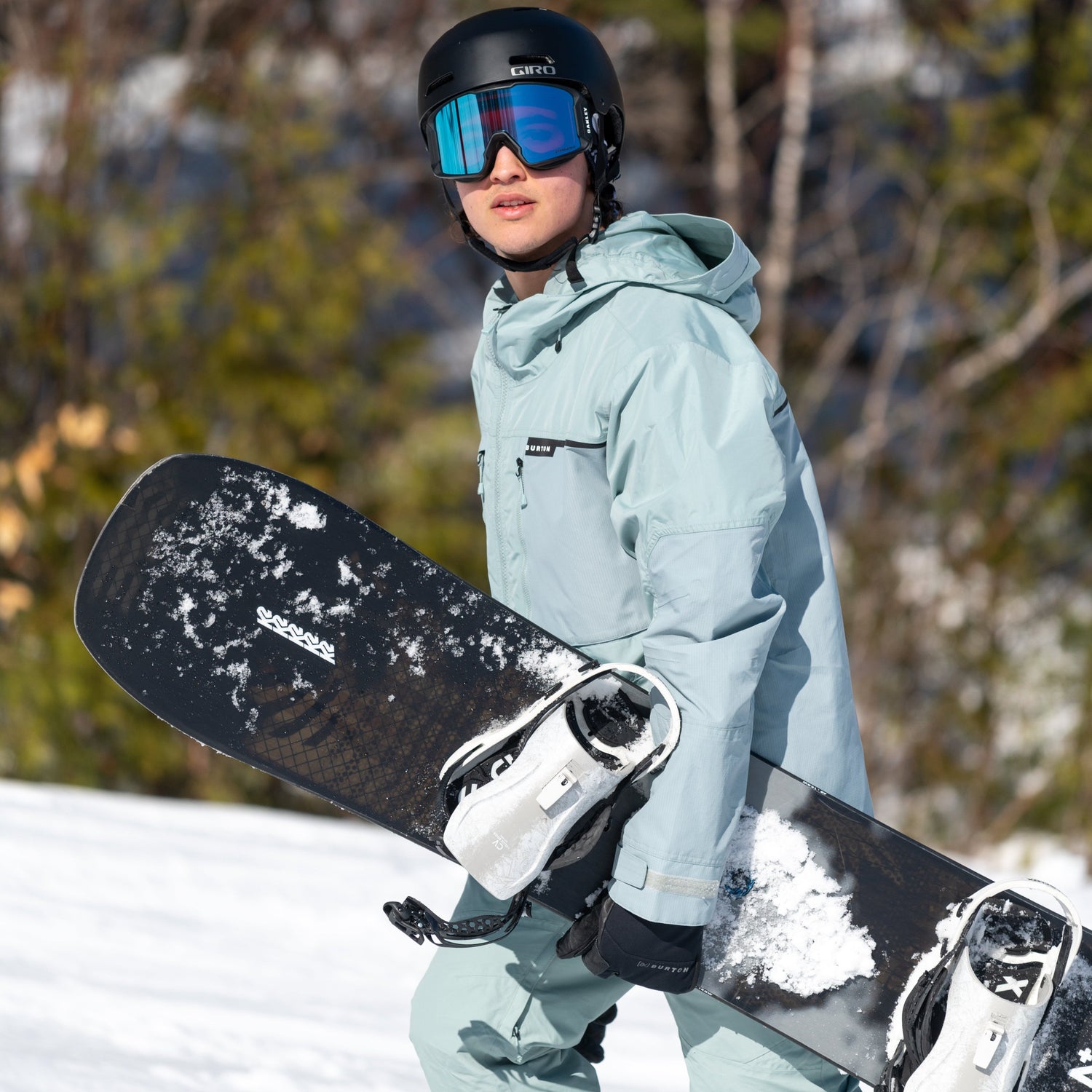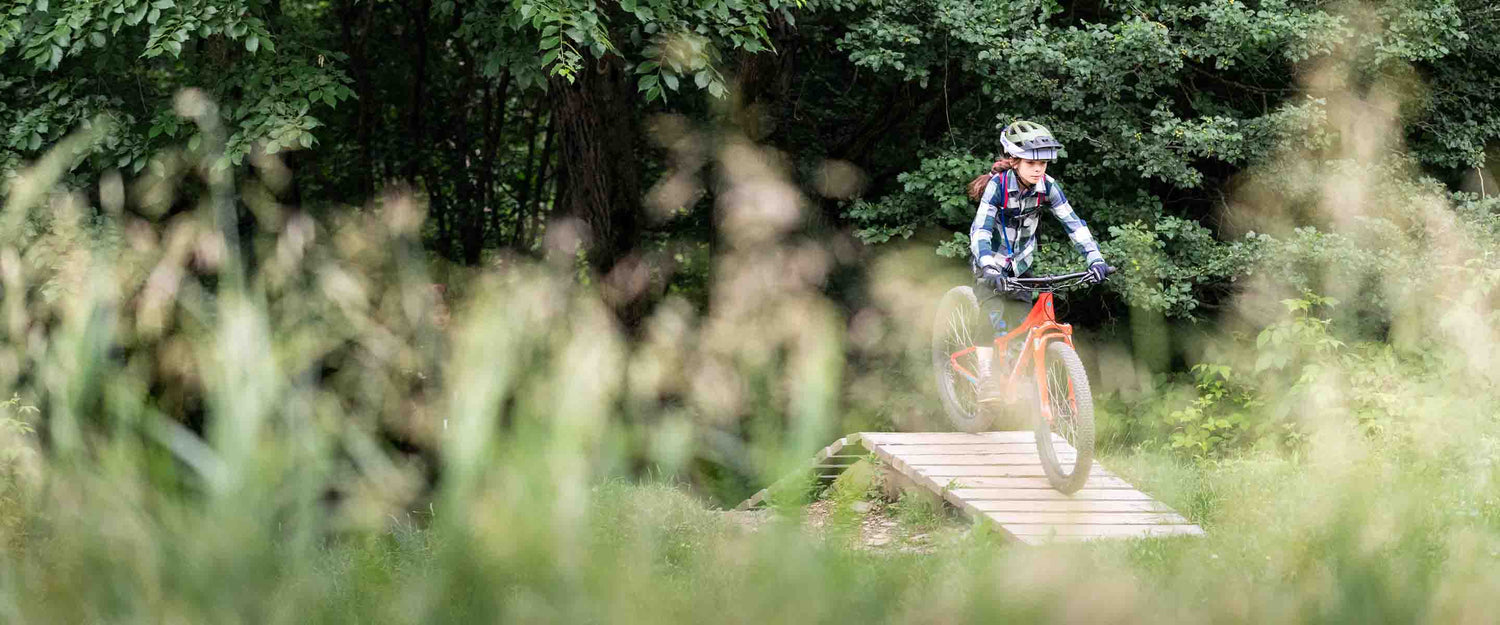Identify the child’s needs
When looking for the right kids’ mountain bike model, there are several key points to consider. First, the child’s height and age are two very important aspects that will help define the proper bike size.
Next, think about his or her experience level and the type of terrain you will ride as a family. In addition, what are your child’s goals for skills progression? Does he or she want to join a mountain bike club, ride for fun or eventually do some jumps?

Choose the Right Size Kids’ Mountain Bike
The size your child’s bike is determined by age and height. If your child is starting out on a mountain bike, there’s no point getting one that’s too big with the idea that he or she will grow into it during the season. A mountain bike that’s too big or small will be a hindrance more than anything else.
Unlike adults’ bikes, the size of kids’ mountain bikes are based on wheel size.
20-inch mountain bike
- 5 to 8 years old
- Height: 114 cm to 137 cm
- Standover height: 48 cm to 63.5 cm
24-inch mountain bike
- 8 to 11 years old
- Height: 124.5 cm to 150 cm
- Standover height: 58 cm to 71 cm
26-inch mountain bike
- 10 to 12 years old
- Height: 142 cm and above
- Standover height: 63.5 cm and above
Finding the right mountain bike size for your young cyclist will boost his or her confidence and allow him or her to progress over time.

Choose the Frame Type
There are three types of frames to think about based your child’s needs: rigid, hardtail (single suspension) and full suspension (dual suspension).
Rigid bikes
- Rigid aluminum or steel frame and fork;
- Ideal for learning how to master a bike on rolling trails and pump tracks;
- Designed for beginners;
- Less expensive.
- Our best rigid bikes - Rocky Mountain Edge 24, Scott Roxter 24
Hardtails
- Suspension on the fork;
- Great for progressing and learning to use suspension on trails with a few more obstacles, such as roots and small rocks.
- Our best hardtails for kids - Devinci Ewoc 26, Scott Roxter 26, Scott Contessa 24, Rocky Mountain Edge 26.
Full suspension bikes
- Rear suspension along with suspension on the fork;
- Ideal for progressing on more technical trails, downhills and jumps;
- Aimed at children with an advanced intermediate level who want to progress and develop their potential on trails.
- Our best full suspension bikes for kids - Rocky Mountain Reaper 24, Rocky Mountain Reaper 26, Scott Ransom 400, Marin Rift Zone 26

Consider the Mountain Bike Components
Just like mountain bikes for adults, children’s bikes are equipped with components according to type and level. For little ones, it’s important to think about the type of brakes, suspension, number of speeds and tires.
Types of Brakes
-
Backpedal brakes (coaster breaks)
With this type of brake, the child can stop the bike by pedalling backwards. Used on bikes for kids getting started on two wheels, they are simple to use and easy to understand. However, they don’t teach children to use handlebar brake levers, which will be useful when they find themselves on mountain bike trails.
-
Rim brakes
This type of brake works with a lever located on the handlebars and brake pads on the rim. When pressure is applied on the lever, the connected cable engages the pads that stop the wheel and therefore slow or stop the bike. They are more difficult to adjust than disc brakes.
-
Disc brakes
Disc brakes are the most popular. They work with levers on the handlebars. Disc brakes can be hydraulic or mechanical. Both work with discs on the wheels and pads once the lever is pressed to stop the disc’s movement and slow or stop the bike.
These types of brakes allow children to learn how to brake and build confidence on trails and for the downhills they will one day descend.

Types of suspension
There are several kinds of bike shocks. Air spring shocks remain the most suitable for developing mountain biking skills because they can be adjusted based on your child’s weight. Coil spring suspension is sometimes heavier and less suitable.
Number of speeds on kids’ mountain bikes
Children’s bikes usually have between six and eleven speeds, depending on the bike’s size and price level. The more speeds there are, the more efficient and easier the cadence on climbs will be once your child reaches that point in his or her progression.
Tires
Check the quality of the tires that are on the bike. Just like your mountain bike, your child’s bicycle needs good, grippy tires that perform well on trails.
Set a Budget
There are kids’ bikes for every budget. When you make your purchase, you should also consider the resale value of your child’s mountain bike. In addition, just as for your mountain bike, you should think about having some maintenance done in a shop. You can consult our price list here!
-
For a hardtail: Entry-level about $600 up to $1,200 for the highest-end bikes
-
For full suspension: About $2,400 and above

What Your Child Needs to Go Mountain Biking
-
A bike helmet;
-
Knee and elbow pads;
-
Mountain bike shoes when they are ready to explore more technical trails;
-
A cage and water bottle;
-
Breathable clothing;
-
Tips to build confidence and learn the basics.



